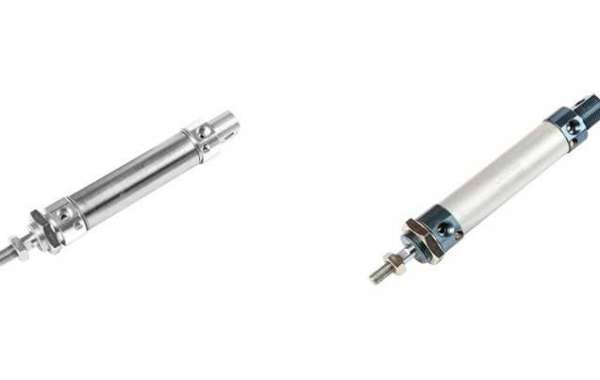In this hydraulic selection guide, we’ll point out the different factors you need to consider in order to select the right Standard Cylinder for any specific application.
Factors to Consider in the Selection of a Hydraulic Cylinder:
Bore Size
The cylinder bore size will be determined by the amount of force needed since the force produced is the system pressure multiplied by the bore size. Most industrial needs will require International Organization for Standardization-compliant or National Fire Protection Association®-standard components.
Style
The first distinction when choosing pneumatic cylinder design is whether to select rodless or piston rod actuation. In a single-action rod type, compressed air entering through a port at one end of the cylinder moves the piston rod, with one stroke moving the load and an exhaust port that lets the air out. How fast the rod moves depends on how fast the air is exhausted. Double-acting cylinders drive the rod back again as well, allowing a push-pull load motion, while single-acting cylinders use a return spring.
Rod-style cylinders can be broken down yet further into different types:
Compact, for smaller spaces and short-stroke operation. Mostly single-acting.
Repairable, for rugged duties and longer life
Disposable, for lighter-duty operations and no repair potential
Guided, for controlled, precise linear motion and high side loads
Rack-and-pinion, to convert linear motion into angular rotation
Rodless cylinders can be a bellows type, with a single-acting inflatable elastomer tube that creates high force and bends in any direction; or linear sliders, with a carriage-mounted or cable-and-pulley load. There are also magnetically coupled actuators and guided linear slides. Rodless Pneumatic cylinders are ideal for high moment loads or applications requiring a long stroke, and save space by containing the stroke action within the overall envelope.
Stroke
Determining the stroke length will also narrow down the type of cylinder required. Stroke length depends on the job, and overlaps may occur, but general classifications are:
short stroke, for compact cylinders, as little as 1/16"
intermediate stroke, for light duty automation, up to 3 feet
long stroke, for (e.g.) automatic doors, 40-99"
speciality stroke, with cable-and-clamp pulling a piston, 15-25 feet or more
Cable cylinders can be situated remotely, as the cable can be any length that suits the application and mounting requirements.
Mounting
The hydraulic cylinders are divided into two types, depending on their mounting style, either a pivot mounting or a straight line mounting. Pivot mounted cylinders are used when a load is to be moved in an arc and includes supports such as a clevis and a trunnion.
Cylinders mounted in a straight line are used when the load is to be moved in a linear direction. It includes a flange support and a back or front foot.
Speed
Standard hydraulic cylinder seals can take speeds of up to 1 meter per second. In most high-speed applications, you should look for standard low-friction seals. Keep in mind that the higher the velocity, the higher the temperature.
- Temperature
Standard cylinders are designed to handle temperatures between minus 65 and 500 degrees. If you expect that your application will require more extreme temperature resilience, you’ll need to look for more specialized equipment.
That's all information, if you want to know more information please visit the professional Micro Pneumatic Cylinder manufacturer nblida.com







